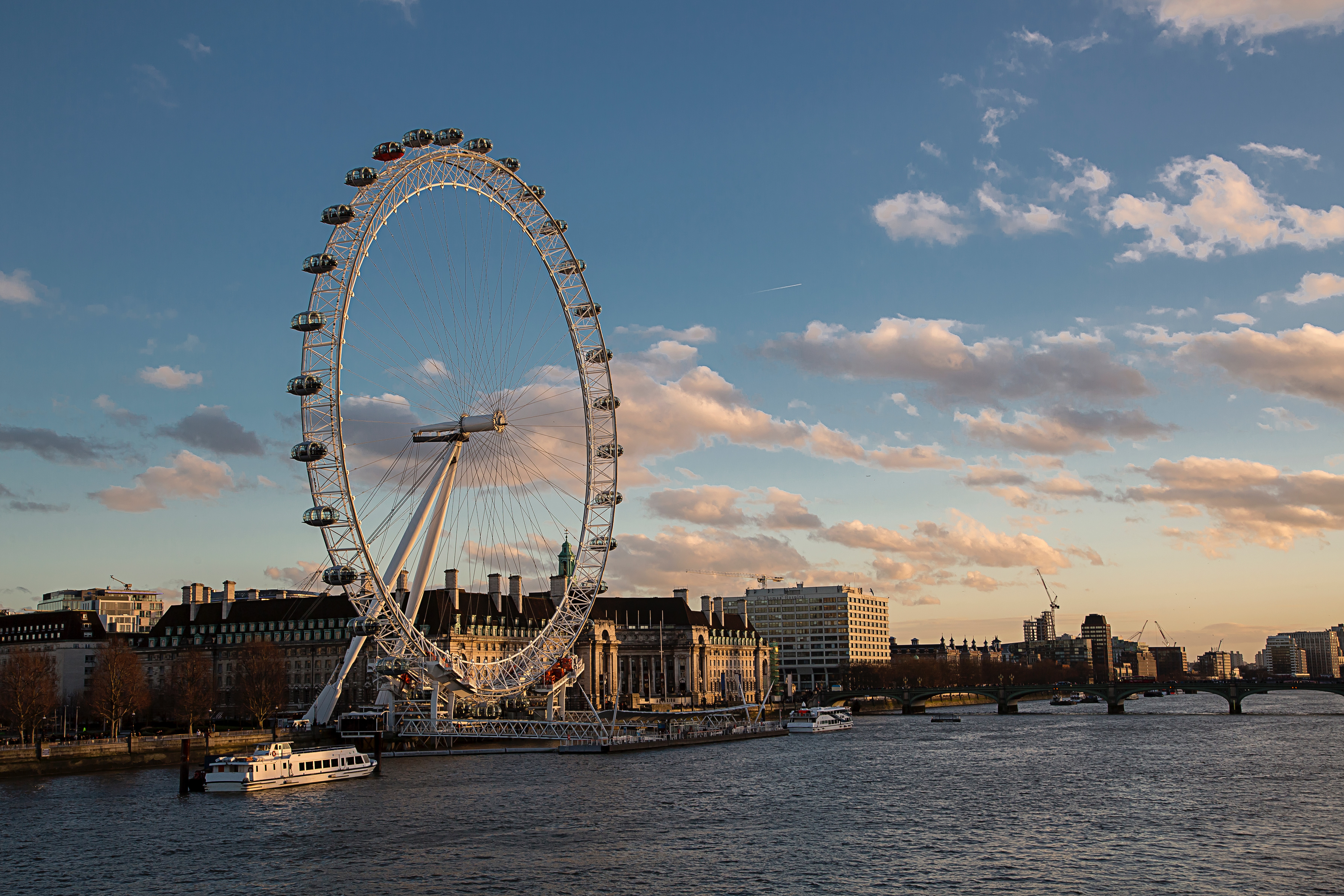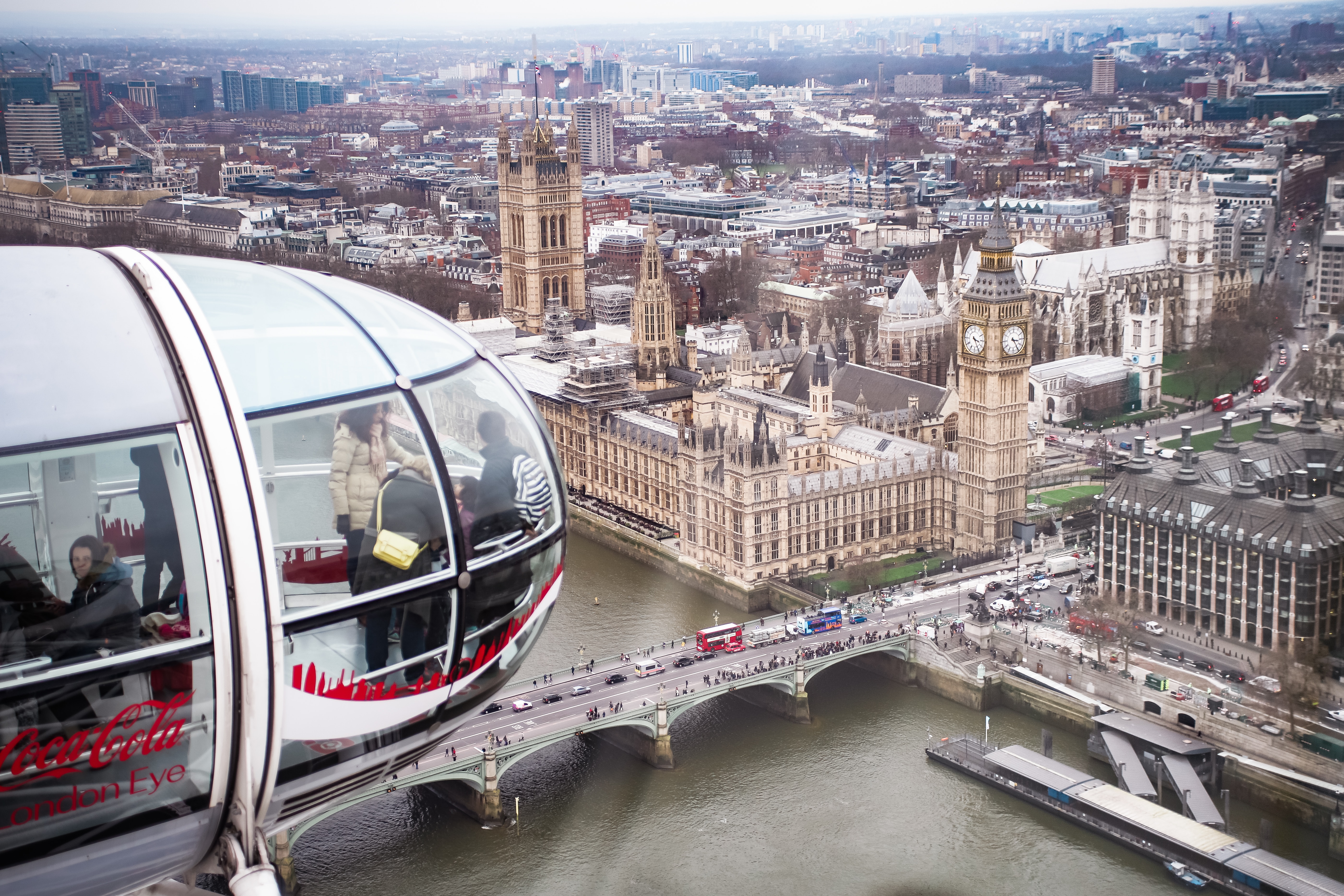
In the heart of a city where the very cobblestones whisper tales of centuries gone by, London stands as a living testament to the inexhaustible wellspring of human history and culture. To encapsulate the essence of this sprawling metropolis in mere words is a Herculean task, for it is a tapestry woven from the threads of time, a mosaic of stories, and a symphony of experiences. Enchanting and enigmatic, London’s streets bear witness to a grandeur that has witnessed empires rise and fall, and a richness that has long been a source of fascination for wanderers and dreamers. From the hallowed halls of sacred sites to the resplendent tapestry of legends, London is a city where past and present dance together in splendid harmony. It is a place where pomp and pageantry share the stage with Michelin-starred restaurants, world-class museums, art galleries that breathe life into canvases, and shops that tell tales of sartorial elegance. And amidst this historical grandeur, London’s lush gardens unfurl their green tapestries, offering moments of serenity amid the urban hustle and bustle. Join us on a journey through this city of dreams, where every street corner whispers a new chapter in a never-ending saga of awe and wonder.
London, the bustling capital of the United Kingdom, is a city that seamlessly blends rich history with modern culture. Whether you’re a first-time visitor or returning to this vibrant metropolis, planning your stay for three days can be an exciting adventure. In this guide, we’ll take you on a journey through the best sights, activities, and culinary experiences for your three-day London adventure. Let’s dive in!
The Enduring Legacy of the British Red Telephone Box: A Symbol of Heritage and Nostalgia
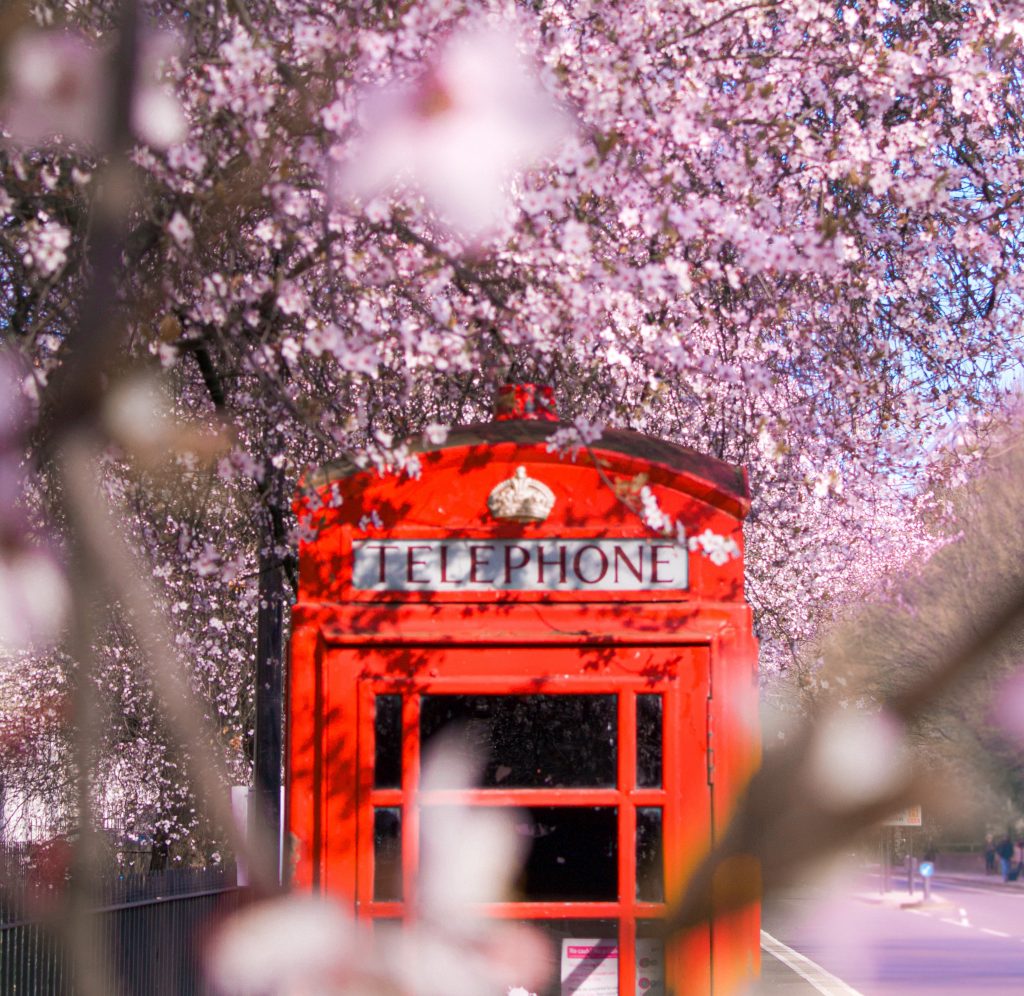
The traditional British Red Telephone Box, an iconic symbol of Britain, has graced the landscapes of the United Kingdom for decades. Despite a reduction in their number in recent years, these red phone booths still hold a special place in the hearts of both locals and tourists, serving as nostalgic reminders of a bygone era.
Designed by Sir Giles Gilbert Scott in the 1920s, the red telephone box, often referred to as the K6 model, is an enduring emblem of British design and heritage. Its vivid red color, domed roof, and crown insignia are instantly recognizable. Although originally intended for telecommunication purposes, these boxes have transcended their utilitarian role to become cultural landmarks.
In recent years, the rise of mobile phones and advancements in technology have led to a decline in the need for traditional telephone boxes. Many have been decommissioned and removed from service, resulting in a reduction in their number across the UK. However, the legacy of these red telephone boxes remains strong. Several of them have been repurposed and preserved, ensuring their continued presence in many places throughout the country.
Some red phone booths have been transformed into small community libraries, art galleries, or information hubs. These adaptive reuses not only breathe new life into the iconic structures but also contribute to the sense of community and cultural preservation. In some instances, they have been relocated to museums and heritage sites, where they are celebrated as symbols of British history and design.
Tourists visiting the UK often make it a point to seek out these iconic red telephone boxes, not only for their aesthetic appeal but also for the unique photo opportunities they offer. Stumbling upon a perfectly preserved red telephone box nestled against the backdrop of picturesque villages, rolling countryside, or bustling city streets is a delightful experience.
These traditional red telephone boxes are more than just relics of the past; they are enduring symbols of a nation’s identity and history. While their numbers may have dwindled, their significance in the cultural landscape of the United Kingdom remains unshaken, reminding us of the importance of preserving and celebrating our heritage in an ever-changing world.
London’s Cultural Tapestry: A Vibrant Hub of Arts and Entertainment
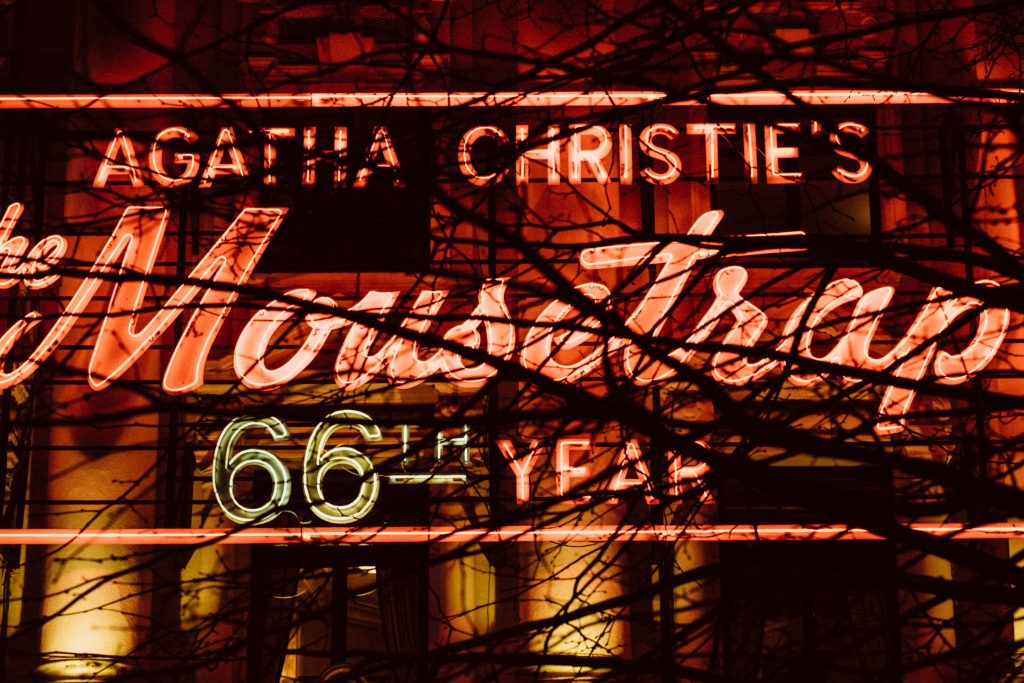
London, a city steeped in history, has always been at the forefront of the entertaining arts, a place where creativity knows no bounds. From the literary genius of Shakespeare to the rebellious energy of the Sex Pistols, London’s contributions to the world of arts and entertainment are immeasurable. As you navigate the bustling metropolis, whether you’re riding the iconic Tube or walking down its historic streets, you’re bound to be constantly reminded of the city’s rich cultural tapestry.
Shakespeare, often regarded as one of the greatest playwrights in the English language, left an indelible mark on London’s cultural heritage. The city is home to the Globe Theatre, a reconstruction of the original theater where Shakespeare’s timeless masterpieces were first performed. Visitors can step back in time and witness the magic of his plays in an authentic Elizabethan setting. The legacy of the Bard is not just confined to a historical theater; it lives on in London’s countless theaters, where classic and contemporary works continue to captivate audiences.
But London’s cultural offerings are far from one-dimensional. It’s a city that embraces diversity, and this is reflected in its vibrant music scene. The Sex Pistols, pioneers of the punk rock movement, emerged from London’s underground music scene in the 1970s. Their rebellious spirit, captured in songs like “Anarchy in the U.K.,” challenged the status quo and influenced generations of musicians. The city’s music venues, from the iconic Royal Albert Hall to the intimate pubs of Camden, continue to be hives of creativity, hosting artists from every genre imaginable.
Every time you ride the escalators in the London Underground, the barrage of posters lining the walls serves as a constant reminder of the city’s cultural richness. From West End musicals to art exhibitions, film festivals, and live music performances, London’s cultural opportunities are as diverse as its population. Whether you’re interested in the classics, the avant-garde, or the cutting-edge, London offers something for every taste.
In a city that has been a muse for countless artists, London’s enduring commitment to the arts and entertainment ensures that it remains a beacon of creativity and a source of inspiration for both locals and visitors. The legacy of Shakespeare and the punk spirit of the Sex Pistols continue to reverberate through its streets, making London a dynamic hub of culture that never lags behind the times.
Dive into London’s rich theatrical history with a mesmerizing Shakespearean performance, a timeless journey through literature and drama.
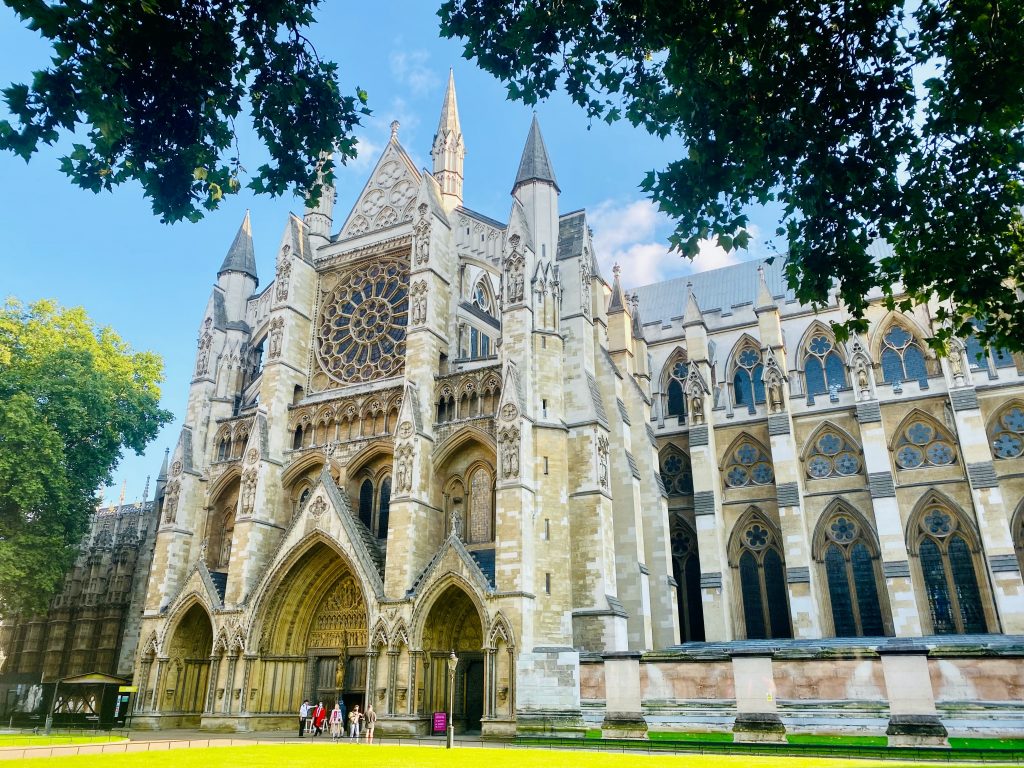
London, a city rich in history and culture, is dotted with a myriad of historic churches, each with its unique charm and significance. However, Westminster Abbey stands as a beacon of unparalleled historical importance, unparalleled beauty, and an enduring, vibrant community of worshipers. It is not just a church; it is a living testament to the essence of faith and heritage in the heart of the city.
The history of Westminster Abbey is intertwined with that of the United Kingdom itself. Originally constructed by Edward the Confessor in the 11th century, it has witnessed countless royal coronations, weddings, and funerals. The Abbey’s grand architecture, featuring soaring Gothic spires and intricate stone carvings, is a testament to the skill and dedication of the craftsmen who built it.
Westminster Abbey’s beauty extends to its interior, where one can marvel at its magnificent stained glass windows, ornate chapels, and the intricate detail of its fan-vaulted ceilings. Each corner of the Abbey tells a story, with the Poets’ Corner honoring literary giants like William Shakespeare and Geoffrey Chaucer, while the Nave is a sweeping space that has hosted numerous royal ceremonies.
What truly distinguishes Westminster Abbey is its status as a living place of worship. Unlike many historic churches that have become little more than tourist attractions, the Abbey maintains a vibrant and active congregation. Regular services, choral evensongs, and religious events continue to draw worshipers and pilgrims from around the world.
The Abbey’s role in contemporary society goes beyond its religious significance. It serves as a venue for state occasions, royal celebrations, and concerts, drawing people of all backgrounds together. Its enduring importance was most recently on display during the wedding of Prince William and Catherine Middleton, a global event that showcased the Abbey’s role in the life of the nation.
For visitors, Westminster Abbey is not just a place to admire from a historical perspective; it’s a place to experience the living history of London. Exploring its hallowed halls, attending a service, or simply taking a moment of reflection in its awe-inspiring surroundings is a journey through time and faith.
In a city filled with historic treasures, Westminster Abbey shines as an enduring symbol of faith and heritage. It is a place where the past meets the present, where beauty meets history, and where a community of worshipers continues to gather, ensuring that its legacy remains an integral part of London’s cultural and spiritual identity.
London’s Pubs: The Heart and Soul of a Great City
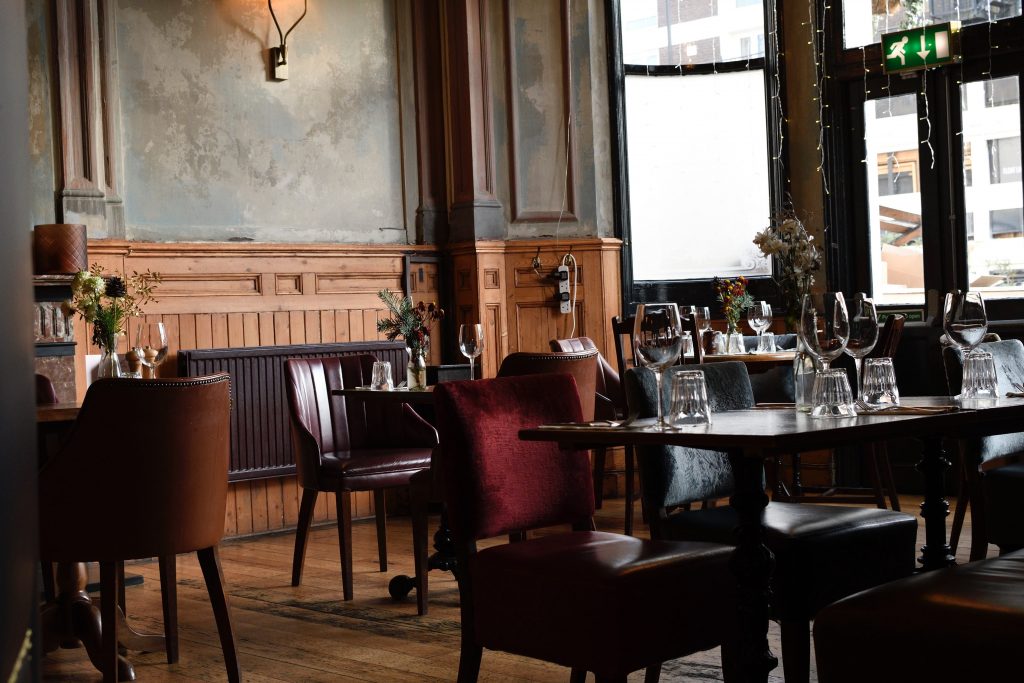
In the tapestry of London’s culture, the humble pub stands as an indispensable thread. It’s impossible to conjure up the image of London without the comforting thought of these beloved drinking establishments. From the historic to the eccentric, London’s pubs are an essential part of the city’s character, offering not only a place to savor ales and spirits but also to partake in the city’s rich social tapestry.
For many, London’s pubs are synonymous with coziness, camaraderie, and quintessential British fare. These establishments are where friends and strangers come together, sharing stories and laughs over a pint of ale or a glass of gin. Each pub has a unique character and history, some dating back centuries, like The George Inn, which has been serving patrons since the 17th century. The rich, wooden interiors, dimly lit rooms, and distinctive signage are just a few of the many charming elements that make London’s pubs so inviting.
When it comes to food, London’s pubs serve up a diverse range of dishes, but it’s the comfort food that truly shines. Classics like Fish and Chips, Bangers and Mash, Chicken Tikka Masala, and a hearty pint of Warm Ale embody the essence of British culinary tradition. These dishes are not only flavorful but also a testament to the enduring appeal of simple, satisfying comfort food.
Beyond their historical significance and culinary delights, London’s pubs play a pivotal role in fostering a sense of community. They serve as gathering places for celebrations, meetings, and cultural exchanges. Whether you’re enjoying a Sunday roast with your family, raising a glass to a friend’s success, or simply enjoying a quiet moment of solitude, the pub is a space that accommodates all.
The role of the pub in British culture cannot be overstated. It’s a place where strangers become friends, where traditions are upheld, and where the heartbeat of a great city can be felt. London’s pubs are not just about the drinks and food; they are about the people who frequent them, the stories they share, and the memories they create. They are an integral part of what makes London a vibrant, inviting, and heartwarming metropolis.
Discovering the Magic of Piccadilly Circus in London
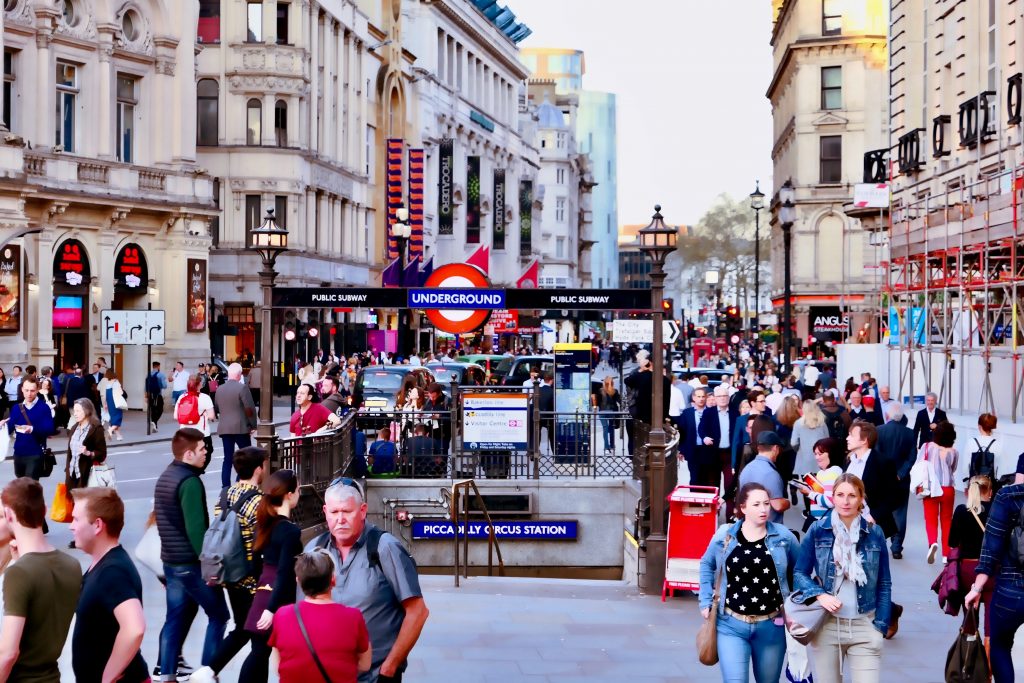
A Vibrant Hub for All: This thriving area welcomes a diverse crowd, from shoppers seeking the latest fashion trends to business professionals navigating the city’s commerce. Tourists, too, flock to Piccadilly Circus, drawn by its magnetic allure. By day, it’s a lively center for commerce, offering an array of shops, restaurants, and theaters. Whether you’re looking to indulge in retail therapy, enjoy a gourmet meal, or catch a world-class play, Piccadilly Circus has it all.
A Nighttime Spectacle: However, it’s in the evening that Piccadilly Circus truly comes alive. The square transforms into a mesmerizing spectacle, with its iconic illuminated signs creating a dazzling display of lights. The atmosphere becomes charged with the energy of clubbers and revelers looking for a memorable night out. The lively mix of club-goers and people watchers creates a unique blend of excitement and relaxation, making it a perfect spot for those looking to experience the vibrancy of London’s nightlife.
What to Explore: When visiting Piccadilly Circus, be sure to take in the remarkable billboards, where famous brands and advertisements light up the night sky. Additionally, you can explore nearby attractions such as the renowned Shaftesbury Avenue, known for its impressive theaters and shows. Venture to Leicester Square for a taste of London’s cinema scene or make your way to Regent Street for premium shopping.
Piccadilly Circus, much like Times Square in New York, encapsulates the spirit of a great city. It’s a place where commerce, culture, and entertainment converge, providing a captivating experience day and night. So, whether you’re out for a shopping spree, a night on the town, or simply to soak in the vibrant atmosphere, Piccadilly Circus is a must-visit destination in the heart of London.
Discovering the Rich History and Efficiency of London’s Underground
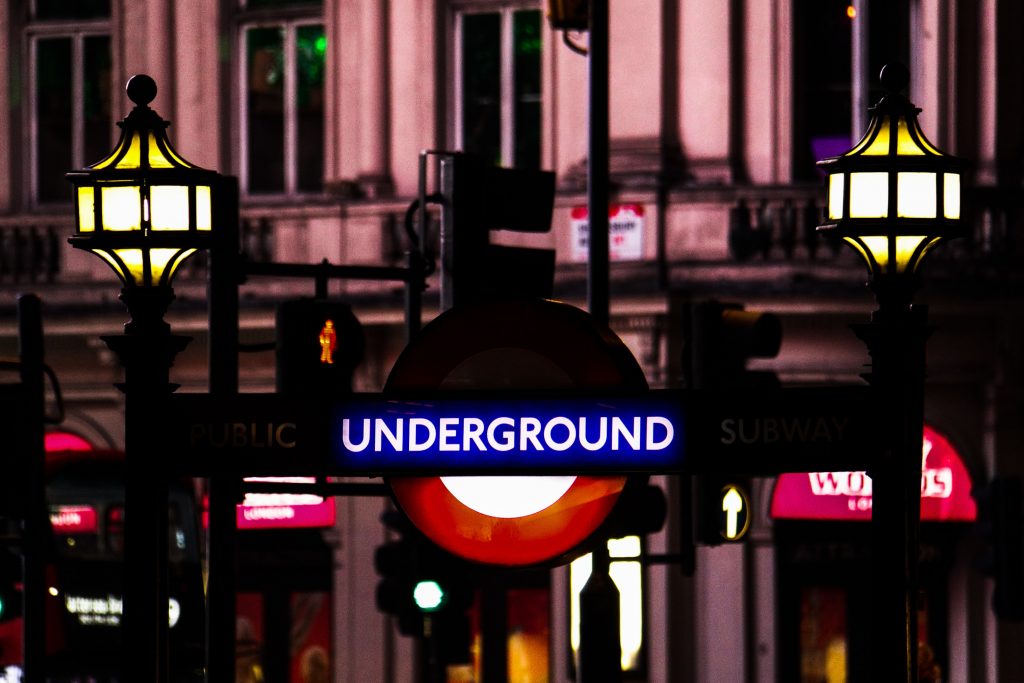
London’s Underground, affectionately known as “The Tube,” is a historic and efficient public rapid transit system that plays a pivotal role in serving Greater London and even stretches into parts of surrounding counties. With roots dating back to the 19th century, The Tube proudly boasts the distinction of being the oldest underground rail network in the world.
Historical Significance: The London Underground, first opened in 1863, represents an incredible leap in urban transportation innovation. Its inception revolutionized the way people moved about the city, reducing congestion and improving accessibility to various parts of London. Since its early days, The Tube has expanded significantly, now encompassing 11 lines and over 270 stations, covering an extensive network that facilitates the daily commute for millions of Londoners.
Efficiency and Connectivity: One of the most remarkable aspects of The Tube is its unparalleled efficiency. The network operates around the clock, ensuring that Londoners can rely on it at any hour. Its extensive coverage means that nearly every corner of London is accessible, making it a lifeline for both residents and visitors. The Tube’s interconnected lines allow for easy transfers, streamlining the process of navigating the sprawling metropolis.
The Oldest Underground Rail Network: The Tube’s status as the world’s oldest underground rail network is a testament to its enduring importance. Its legacy is deeply intertwined with London’s history, and its iconic roundel logo is instantly recognizable, serving as a symbol of the city’s vibrant energy and pioneering spirit.
Visitors to London should not miss the opportunity to experience The Tube, not only as a practical means of getting around but as a historical and cultural treasure. Exploring the Underground, you can trace the city’s evolution and admire the iconic architecture and design of various stations. The Tube is more than just a mode of transport; it’s a living museum of London’s past and a vital artery of its present.
London’s Underground, The Tube, is an indispensable part of the city’s identity. Its rich history and unwavering efficiency make it a beloved institution that keeps London moving and serves as a testament to the enduring innovation and progress that have defined the city for centuries.
Big Ben: The Iconic London Landmark
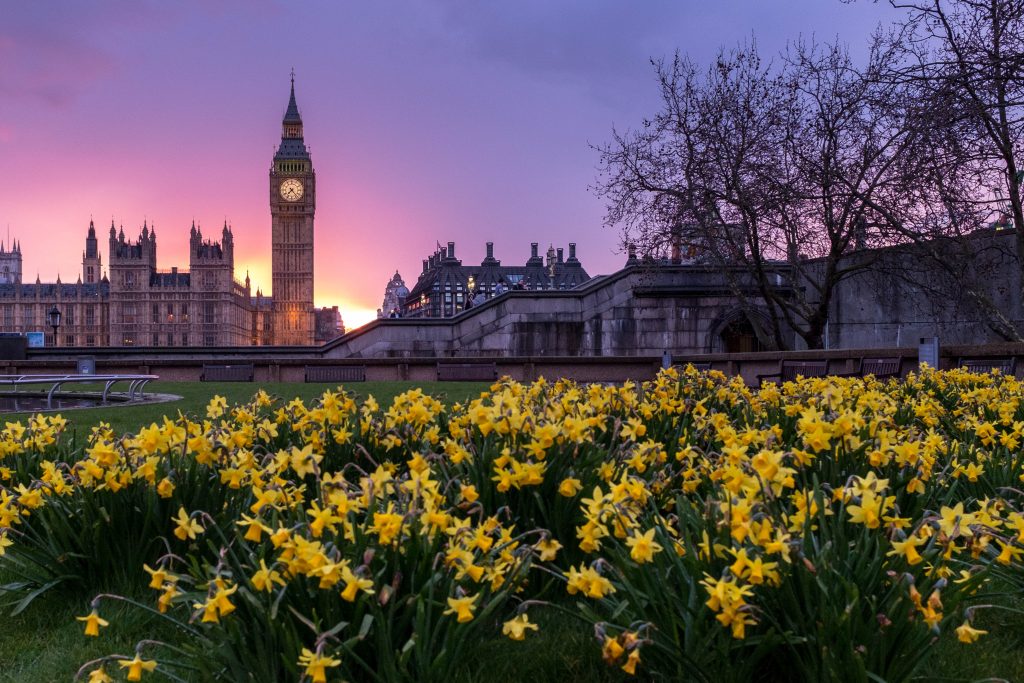
Big Ben, the majestic clock tower of the British Parliament, is an emblematic symbol of London and the United Kingdom. It stands tall on the north end of the Palace of Westminster, overlooking the River Thames. Renowned for its stunning Gothic architecture and its iconic clock face, Big Ben is not just a timekeeping marvel but also a historical and cultural treasure.
History: Big Ben was officially renamed the Elizabeth Tower in 2012 as a tribute to Queen Elizabeth II. However, it’s more commonly known by its original moniker. The tower was completed in 1859 and has a rich history. It was designed by the architect Charles Barry and features elaborate details that reflect the Victorian era’s architectural grandeur.
Architectural Marvel: The tower stands at an impressive height of 315 feet (96 meters) and boasts a striking neo-Gothic design. Its ornate stonework, intricate detailing, and the iconic clock face with its golden accents make it a visual masterpiece. The four clock faces are each 23 feet (7 meters) in diameter, making them one of the largest and most famous clock faces in the world.
The Clock: The clock housed within Big Ben is renowned for its precision and reliability. Its famous chimes, accompanied by the deep and resonant sound of the bell, have marked the passing of time for generations of Londoners and visitors. The melodious tones of the Westminster Chimes have become an integral part of London’s auditory landscape.
Tourist Attraction: Big Ben is not only an architectural and horological marvel but also a major tourist attraction. Visitors from around the world flock to this iconic landmark to witness its grandeur, take photographs, and enjoy the panoramic views of London from the top of the tower.
Big Ben, with its rich history and breathtaking beauty, remains an enduring symbol of London’s grandeur and timeless elegance. Its architectural magnificence, coupled with its flawless timekeeping, draws in visitors from all corners of the globe. For a glimpse into the heart and history of London, a visit to Big Ben is a must. It’s a testament to the city’s commitment to preserving its rich heritage while embracing the modern world. Come and experience the allure of Big Ben, an extraordinary emblem of both the city and the United Kingdom.
Exploring Portobello Road on Saturdays: A Shopper’s Paradise
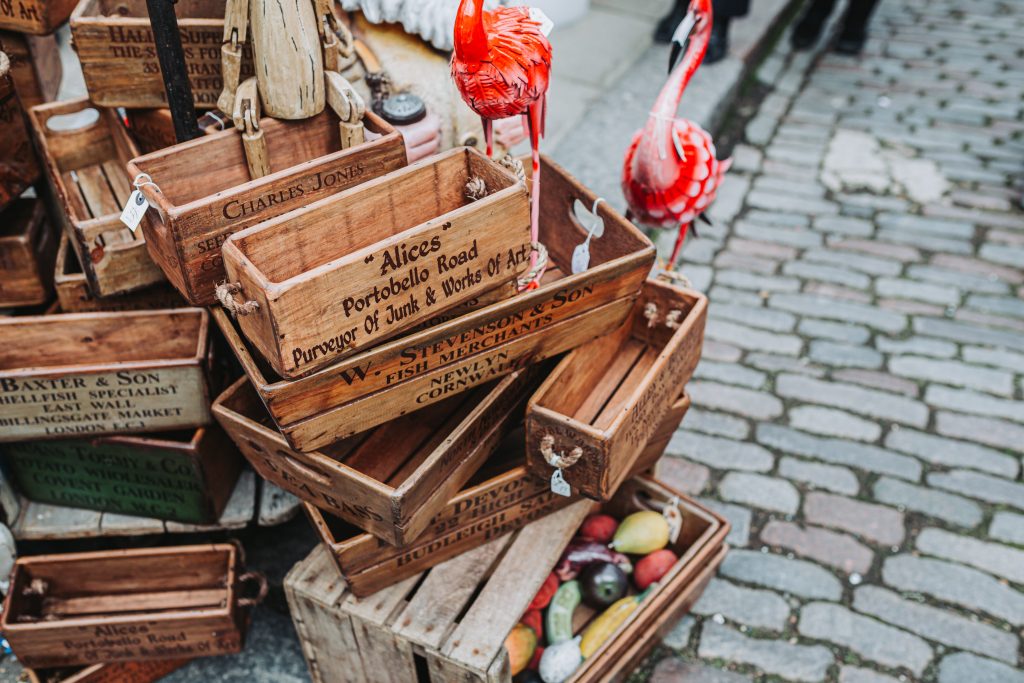
Portobello Road, a charming and historic street in London, transforms into a vibrant and bustling marketplace every Saturday. This iconic road is renowned for its delightful stalls, eclectic shops, and a treasure trove of unique finds. If you’re a fan of antiques, vintage goods, or just love exploring quaint shops, a visit to Portobello Road on a Saturday is a must. Let’s take a closer look at what makes this experience truly special.
Diverse Market Stalls: As you stroll along Portobello Road on a Saturday, you’ll be greeted by a kaleidoscope of market stalls that line the streets. From colorful clothing and handmade crafts to rare antiques and collectibles, the variety of items on display is truly impressive. Whether you’re a seasoned collector or just looking for something unique, you’re sure to find hidden gems that pique your interest.
Antiques Galore: Portobello Road is especially renowned for its antique markets. Collectors and history enthusiasts will revel in the opportunity to unearth rare and fascinating pieces of history. Delve into the past as you browse through antique shops and stalls, hunting for vintage china, exquisite glassware, or unique pieces of jewelry that carry the whispers of time.
Artisanal Shops: Behind the bustling stalls, you’ll discover charming artisanal shops that add to the street’s distinctive character. These boutiques offer handcrafted goods, artwork, and locally made products that make for perfect souvenirs or thoughtful gifts. Whether it’s a one-of-a-kind painting or a handmade piece of jewelry, Portobello Road has it all.
A Feast for Foodies: Exploring the market can work up an appetite, and Portobello Road caters to food enthusiasts as well. You can savor a diverse range of international cuisines from street food vendors or relax in one of the cozy cafés and restaurants for a more leisurely meal.
Portobello Road on a Saturday is a shopper’s paradise, where the old and the new coexist in harmonious chaos. The treasures you’ll find, the stories you’ll uncover, and the vibrant atmosphere make this iconic London street an unforgettable experience. So, if you’re seeking a special piece of china, a fascinating piece of glass, or a pretty piece of jewelry, Portobello Road is the place to be on a Saturday. Dive into the world of history, culture, and craftsmanship that awaits you in this picturesque corner of London.
Discovering Tranquility: A Stroll Through St. James’s Park
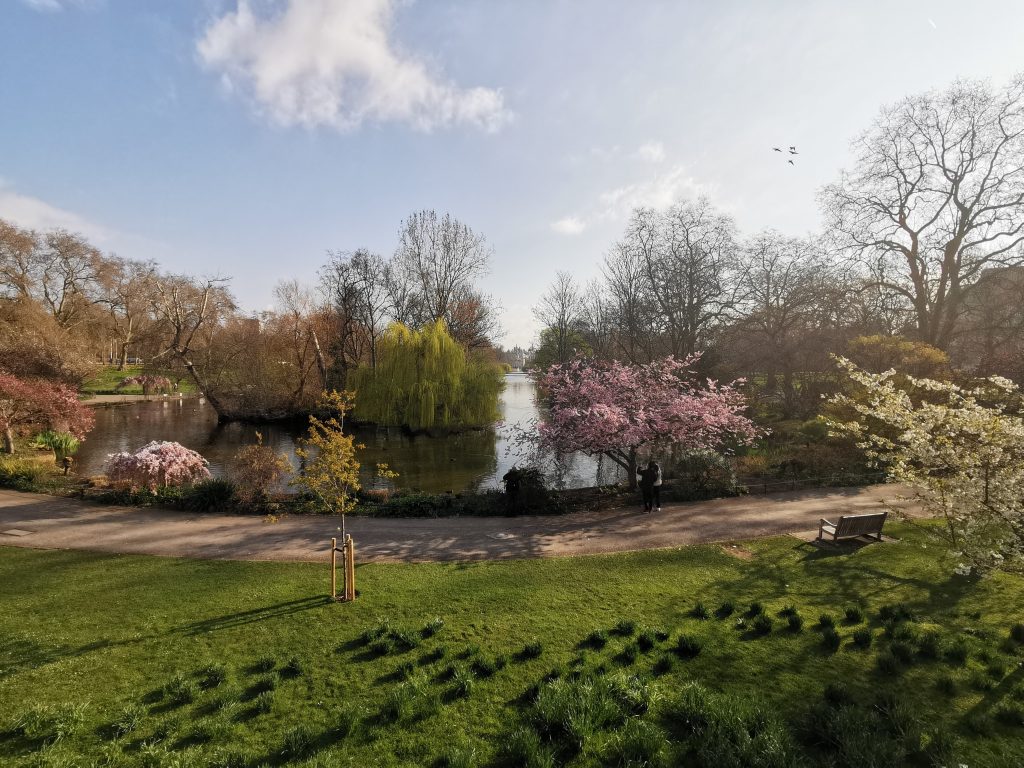
Nestled amidst the bustling heart of London, St. James’s Park is an enchanting green haven that offers respite from the urban clamor. This serene oasis, just a stone’s throw from Westminster, beckons visitors with its lush landscapes, a tranquil lake, picturesque bridges, and the graceful presence of swans and pelicans. A leisurely walk along the meandering paths of St. James’s Park unveils a world of natural beauty and serenity.
Scenic Beauty Abounds: St. James’s Park is a living postcard of scenic beauty. Its impeccably manicured lawns and vibrant flowerbeds provide a feast for the eyes. A leisurely stroll along the park’s winding pathways allows you to soak in the views of its tranquil lake, which mirrors the nearby iconic landmarks.
Wildlife Encounters: One of the park’s distinctive features is its resident wildlife. As you amble along, you’re likely to cross paths with swans and pelicans, which have called the park home for generations. Observing these majestic birds is a delightful and memorable experience.
Historical Significance: St. James’s Park is steeped in history, with roots dating back to the early 17th century. It was originally designed by King James I and has since been enjoyed by countless generations. The park’s rich heritage is palpable, and it provides a sense of connection to London’s past.
A Tranquil Interlude: Whether you’re a local seeking a brief escape from the daily grind or a tourist exploring the city’s landmarks, St. James’s Park offers a peaceful interlude. The gentle rustle of leaves, the soft quacking of ducks, and the distant echoes of the city create a harmonious symphony that soothes the soul.
St. James’s Park, with its natural beauty, historical significance, and the charming presence of its wildlife, is a gem within London’s cityscape. A leisurely walk through this idyllic sanctuary allows you to momentarily step away from the urban hustle and bustle and reconnect with nature. Whether you’re in search of a tranquil escape, a picturesque backdrop for photos, or a taste of London’s history, St. James’s Park is an inviting destination that promises a memorable respite. Embrace the serenity and explore this enchanting oasis in the heart of the city.
London’s Pubs: The Heart and Soul of a Great City
In the tapestry of London’s culture, the humble pub stands as an indispensable thread. It’s impossible to conjure up the image of London without the comforting thought of these beloved drinking establishments. From the historic to the eccentric, London’s pubs are an essential part of the city’s character, offering not only a place to savor ales and spirits but also to partake in the city’s rich social tapestry.
For many, London’s pubs are synonymous with coziness, camaraderie, and quintessential British fare. These establishments are where friends and strangers come together, sharing stories and laughs over a pint of ale or a glass of gin. Each pub has a unique character and history, some dating back centuries, like The George Inn, which has been serving patrons since the 17th century. The rich, wooden interiors, dimly lit rooms, and distinctive signage are just a few of the many charming elements that make London’s pubs so inviting.
When it comes to food, London’s pubs serve up a diverse range of dishes, but it’s the comfort food that truly shines. Classics like Fish and Chips, Bangers and Mash, Chicken Tikka Masala, and a hearty pint of Warm Ale embody the essence of British culinary tradition. These dishes are not only flavorful but also a testament to the enduring appeal of simple, satisfying comfort food.
Beyond their historical significance and culinary delights, London’s pubs play a pivotal role in fostering a sense of community. They serve as gathering places for celebrations, meetings, and cultural exchanges. Whether you’re enjoying a Sunday roast with your family, raising a glass to a friend’s success, or simply enjoying a quiet moment of solitude, the pub is a space that accommodates all.
The role of the pub in British culture cannot be overstated. It’s a place where strangers become friends, where traditions are upheld, and where the heartbeat of a great city can be felt. London’s pubs are not just about the drinks and food; they are about the people who frequent them, the stories they share, and the memories they create. They are an integral part of what makes London a vibrant, inviting, and heartwarming metropolis.
We hope you’ve enjoyed reading about the “Unforgettable 3-Day London Adventure.” Our aim was to provide you with valuable information about some incredible places to explore in London without the need for expensive travel agencies or tours. As London is a vast city, public transportation, taxis, or ride-sharing services like Uber are your allies in navigating its vibrant streets. We deliberately refrained from specifying the exact timing for your visits, as we believe in the beauty of spontaneity. It’s your journey, after all, and you get to decide how you start your day and where you’d like to pause along the way—whether it’s to peruse shops, delve into museums, or simply relax and soak in the city’s unique ambiance. If you’re eager to uncover more hidden gems and iconic spots to add to your 3-day London itinerary, be sure to click the link below “72 Hours in London: A Whirlwind Journey Through Iconic Delights” for further recommendations. London offers a myriad of experiences, and we hope you create cherished memories during your visit. Enjoy your adventure!


